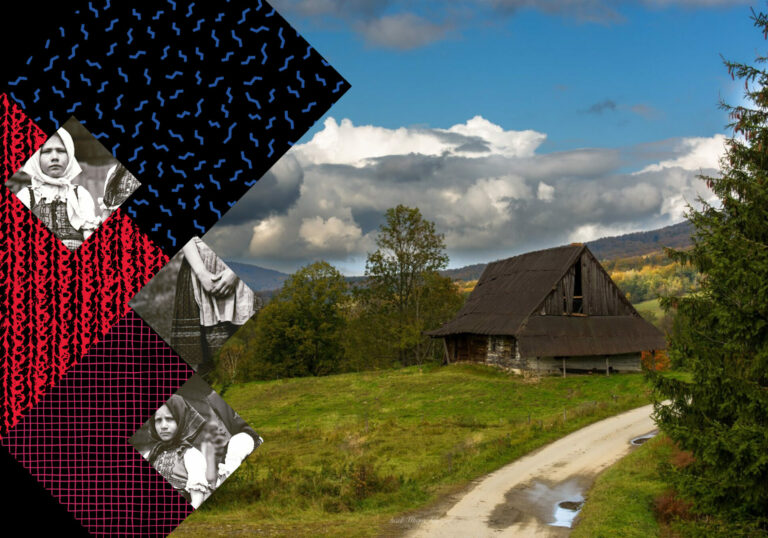Church in Kwiatoń older by several dozen years?
As Gazeta Krakowska announced on their website, a sensational discovery has been made in the Greek Catholic church of St Paraskeva in Kwiatoń. An antimension was found on the tabernacle which may be the evidence for earlier origins of the church, as the beginning of the XVIIIth century. The discovery was made during the renovation works that took place there in the summer.
The information about discovery in the Gazeta Krakowska was given by the custodian of the church – Jan Hyra. He said that the antimension was stored under two eilitions which cover the tabernacle. According to him, every time only the first layer was changed (because of the liturgical year), the second one always remained untouched. The renovation works were the reason for which they decided to take off the second eilition under which the antimension was put. If it had not been for the works, no one would have known about the existence of the antimension – as Hyra says.
On the antimension there is an inscription in the Old Church Slavonic, that is why the parish turned to an Orthodox priest Roman Dubec from Gorlice, who helped to read the inscription. It says that the antimension was given to the Kwiatoń society by bishop John Malachowski who was an archbishop of Przemyśl in 1671-1691. Later on, he managed the Greek Catholic Chełm Eparchy until 1693. It is also an interesting fact, as according to the historical records, the Orthodox Przemyśl Eparchy accepted the provisions of Union of Brest 100 years after its signing, in 1596. The act of reunion of the Orthodox Przemyśl Eparchy to the Catholic Church was made by the contemporaneous bishop Inokentij Winnicki. Thus, the inscription itself confirms that until 1691 – paralelly to Orthodox hierarchs – also Greek Catholic Przemyśl bishops were appointed, but they did not have the real jurisdiction. The second thing that comes from the inscription is a note that the antimension was given during wedding of the Polish king John III Sobieski who ruled in 1674-1696.
These facts could suggest that the church of St Paraskeva in Kwiatoń is older by a dozen or so, or maybe several dozen years. Currently, it is estimated that the church was built around 1700. However, the antimension, apart from the information on the bishop who gave it, does not provide any information to which church exactly it was handed. As priest Dubec emphasized in the interview to the Gazeta Krakowska – […] almost always an antimension included a manual record on to which church it had been handed. In this case, there is no such information. The case is becoming even more mysterious when taking into consideration the fact that every new bishop who got a eparchy would hand such an antimension to a parish anew. It was priests’ duty to store an old antimension somewhere, or hand it to eparchy archive.
Such examples (of passing antimensions from one church to another – new, often built in the place of the former one), are mentioned for example at the time of dean visitations in the Biecz deanery. Thus, also nowadays when there are no dates or other information written on the canvas, it is difficult to confirm their history and origins, it is even more difficult to relate them with the date of building a new church. This may be done more accurately by professional architectural and dendrochronologial research that will accurately (even with accuracy to a particular year) answer the question: when the Kwiatoń, or any other church was built.
The Kwiatoń antimension is made of linen canvas on which there is a print with the mentioned inscription. It is very characteristic, as I have never encountered such an antimension by archbishop Malachowski in literature. Only painted examples are known, as for example the one handed to Pętna – as priest Roman Dubec told Gazeta Krakowska.
Kвятоньскій антимінс є выконаний з леняного полотна, на котрым находит ся надрук з приведеном інскрипцийом. То барз характеристичне, понеже николи не стрітил єм в літературі такого антимінсу єпископа Малаховского. Знаны сут лем малюваны примірникы, як хоц бы сес подаруваний до Панкной – повіл Краківскій Ґазеті о. Роман Дубец.
The church’s custodian – Jan Hyra said that he is planning to visit the Kraków Academy of Fine Arts to read the date that is written on the canvas. He hopes that maybe this will enable for a detailed analysis of the antimension.
According to the historical records, the name of Rusyn village of Kwiatoń in Lemkovyna comes from a Polish word “Kwiatoń.” The first mentions about the village belong to Gladysh family, they are from: 1462, 1480 and 1528. In 1629 the village belonged to the parish in Uście Ruskie and there were only two households. Three hundred years later, in 1921, the general census showed 258 Greek Catholic Rusyns and 3 Catholics. At the beginning of the 1930s, most of the village’s inhabitans turned to Orthodoxy which, in 1933, led to building a chapel -nowadays it is a church of the Orthodox parish in Hańczowa. In 2013, The Greek Catholic church together with other souvenirs of Rusyn architecture was entered into registry of world heritage UNESCO.

Information by Gazeta Krakowska
Publikacja wyraża jedynie poglądy autora/ów i nie może być utożsamiana z oficjalnym stanowiskiem Ministra Spraw Wewnętrznych i Administracji.
Публикация выражат лем погляды автора/авторів і не може быти принимана як офіцияльне становиско Міністра Внутрішніх Справ і Адміністрациі.
Zrealizowano dzięki dotacji Ministra Spraw Wewnętrznych i Administracji.
© Copyright lem.fm, 2025. Вшыткы права застережены.






